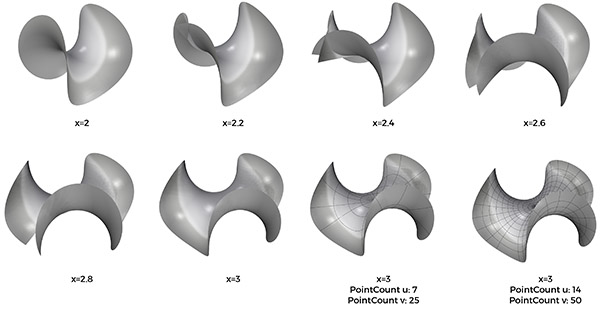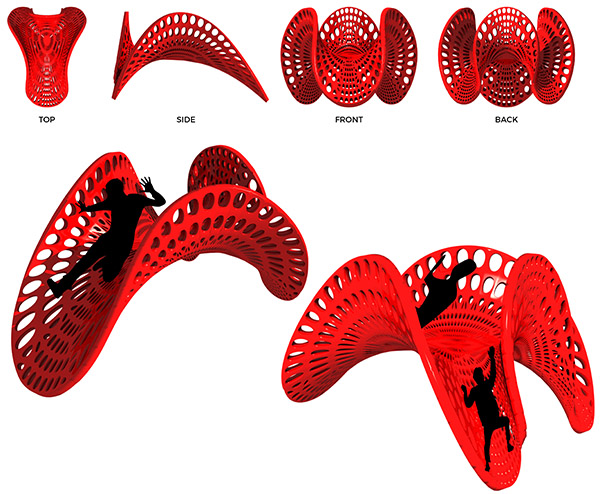Design Mathematics Student Work: Enneper Slide
by Tuğrul Yazar | March 28, 2019 16:39
In Design Mathematics[1] 2019 course, Berke Çelik designed the Enneper Slide in his final project. The Enneper surface[2] is an interesting case since it is a minimal surface[3] with potential variations for spatial implementations. Berke used Rhino Math and Grasshopper / Weaverbird[4] to generate his design. I think the Enneper Slide, as a minimal surface, is an exciting start for a Design Mathematics student work. But as always, much more could have been studied. Unfortunately, Rhino Math is no longer working in Rhino 7. However, we re-created the tool in the upcoming years’ Design Mathematics courses.

The formula he used to construct the student work: Enneper Slide. You can see the Rhino Math input domains and the three parametric functions that control x, y, and z coordinates.

Several variations of the student work: Enneper Slide

Weaverbird application to the selected surface. Is it that simple?

This study is interesting because of its direct implementation as a “slide”. I am not sure about the real potential of it. However, if you think about CAD in general, and all the parametric surface families, it is just one of them, chosen to be built. After this initial step, you can advance this kind of project by merging the mathematical qualities (being a minimal surface for instance) with the spatial, functional, and material qualities. Otherwise, this cannot go beyond a form-finding study. After the 2018 and 2019 experiences, I changed this elective course a lot. Now, I am studying and teaching the fundamental mathematical concepts used in CAD. This becomes an increasingly interesting field for me. I hope I can live long enough to see the end of it. You can follow these studies in “Research”, under “Linear Algebra”, “Parametric Curves” and “Parametric Surfaces” categories.
- Design Mathematics: https://www.designcoding.net/category/education/design-mathematics/
- Enneper surface: https://mathcurve.com/surfaces.gb/enneper/enneper.shtml
- minimal surface: https://www.designcoding.net/category/research/minimal-surfaces/
- Weaverbird: https://www.grasshopper3d.com/group/weaverbird
Source URL: https://www.designcoding.net/design-mathematics-student-work-enneper-slide/